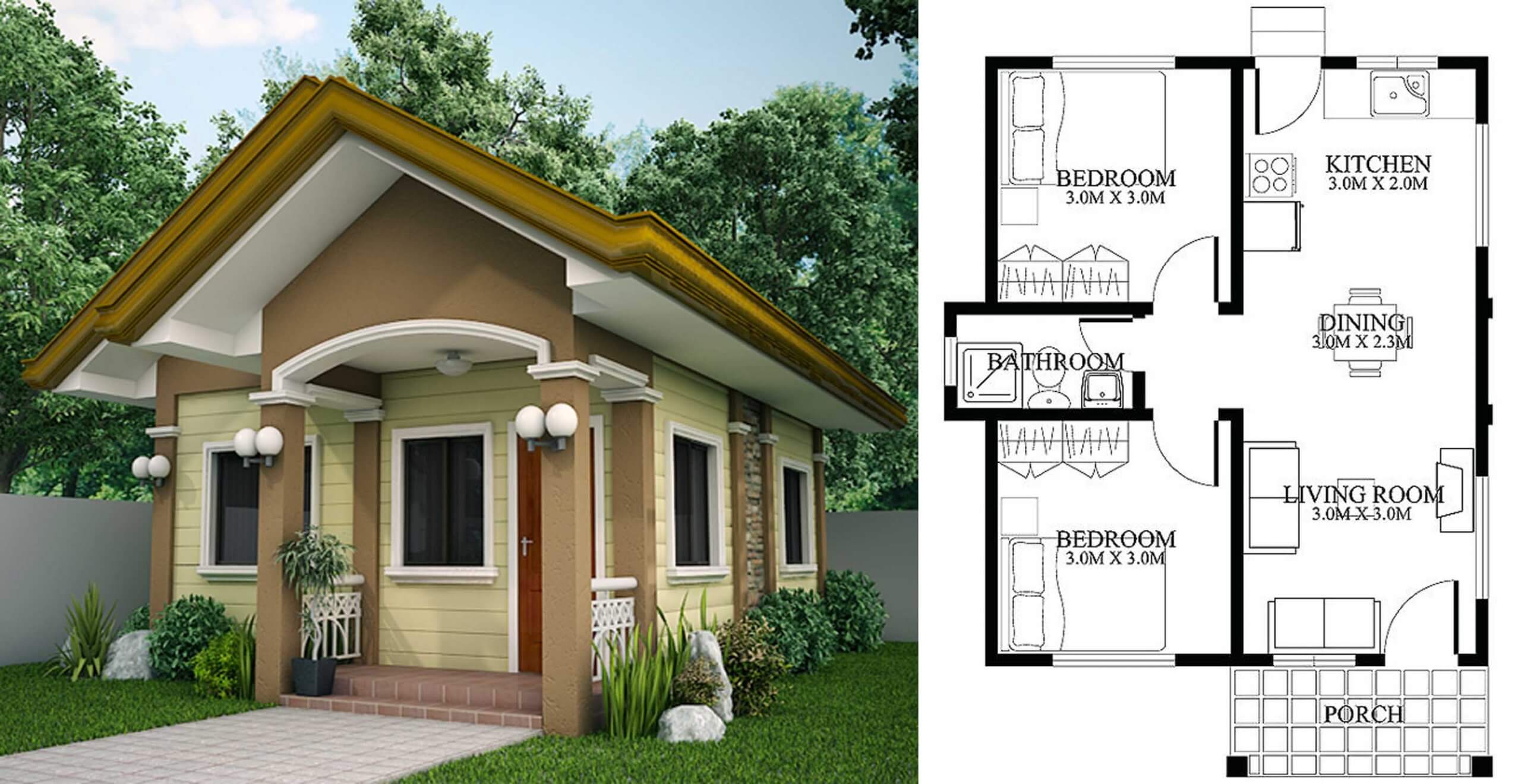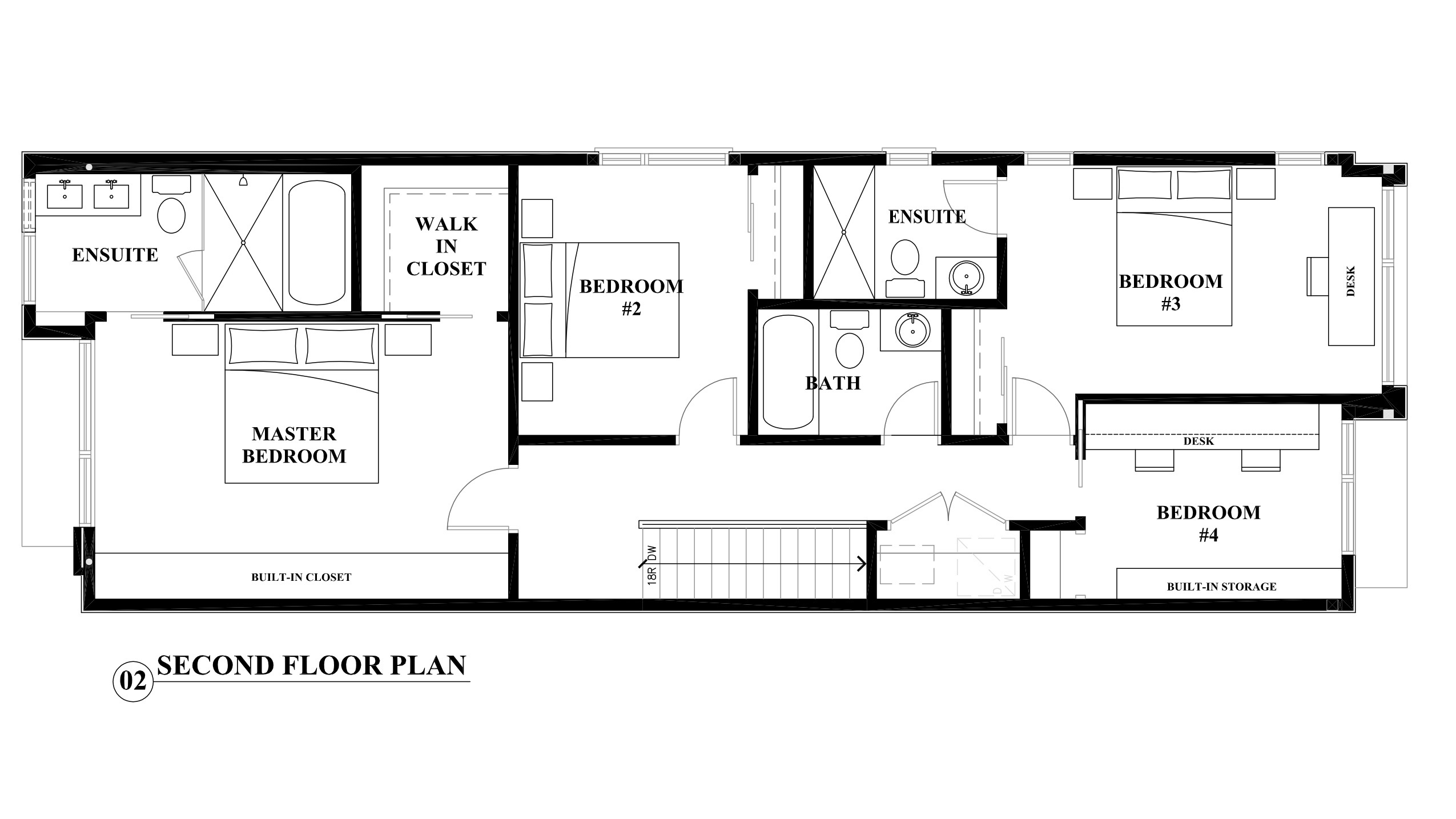Layout and Design Considerations

The decision to have two bedrooms upstairs and one downstairs is a common design choice in homes, offering both advantages and disadvantages that impact the overall living experience. This layout can influence the flow of the house, create distinct living spaces, and cater to different family needs.
Advantages and Disadvantages
The advantages of this layout include providing separate living spaces, offering flexibility for multi-generational living, and potentially creating a more private and quiet space downstairs. However, it can also present challenges, such as potential noise issues between floors, requiring more stairs for everyday activities, and potentially limiting the space available for other living areas.
Impact on Flow and Living Experience
The layout of two bedrooms upstairs and one downstairs can significantly impact the flow of the house and the overall living experience. The placement of the downstairs bedroom can create a distinct living area, ideal for guests or older family members who prefer a more private and accessible space. This separation can also create a quieter environment upstairs, promoting restful sleep for children or teenagers.
Architectural Styles
This layout is commonly found in various architectural styles, including:
- Colonial Revival: Characterized by symmetrical facades, central entrances, and often featuring a formal living room and dining room on the first floor. The downstairs bedroom could be used as a guest room or a study.
- Craftsman: Emphasizes natural materials, built-in features, and a focus on functionality. The downstairs bedroom could serve as a home office or a cozy den.
- Victorian: Known for its intricate details, elaborate ornamentation, and often features a spacious layout with multiple rooms. The downstairs bedroom could be a guest suite or a home office.
Adapting for Different Family Needs
This layout can be adapted to accommodate various family needs:
- Multi-generational living: The downstairs bedroom can provide a private and accessible space for older family members or those with mobility issues.
- Growing families: As families grow, the upstairs bedrooms can accommodate children, while the downstairs bedroom can serve as a nursery or a playroom.
- Home office: The downstairs bedroom can be converted into a home office, providing a quiet and dedicated workspace.
Floor Plan Visualization
Imagine a two-story house with a living room, dining room, and kitchen on the first floor. The downstairs bedroom is located at the back of the house, offering privacy and potential access to a private patio or garden. Upstairs, two bedrooms are positioned at the front and back of the house, each with its own closet and bathroom. The hallway leading to the bedrooms could feature a built-in bookshelf or a small seating area.
Functionality and Usage

This section delves into the practical aspects of having a bedroom downstairs, exploring its potential uses, advantages, and potential challenges. We will also discuss layout strategies for optimizing privacy and quiet for those sleeping upstairs, and provide tips for maximizing space and storage in each room.
Downstairs Bedroom Uses
The downstairs bedroom offers a versatile space that can be adapted to various needs. Here are some potential uses:
- Guest Room: A downstairs bedroom provides a comfortable and convenient space for guests, offering privacy and independence from the main living areas. This is particularly beneficial for guests who might require easy access to amenities like a bathroom or kitchen.
- Home Office: Transforming the downstairs bedroom into a dedicated home office allows for a quiet and private workspace, separated from the distractions of the main living areas. This is especially valuable for those working from home or requiring focused work time.
- Playroom: A downstairs bedroom can be a perfect playroom for children, providing a dedicated space for their toys, games, and activities. This can help keep the main living areas tidy and create a designated area for play and imagination.
Optimizing Privacy and Quiet
The layout of a home with a downstairs bedroom can be strategically designed to maximize privacy and quiet for those sleeping upstairs.
- Soundproofing: Implementing soundproofing measures in the downstairs bedroom, such as thick carpets, curtains, or acoustic panels, can significantly reduce noise transmission to the bedrooms upstairs. This is particularly important if the downstairs bedroom is used as a home office or playroom.
- Strategic Placement: Placing the downstairs bedroom away from the bedrooms upstairs, or separating them with a hallway or other buffer space, can help minimize noise disturbances. This layout creates a natural barrier between the sleeping areas and the downstairs bedroom.
- Quiet Hours: Establishing designated quiet hours for the downstairs bedroom, especially during nighttime, can help ensure peaceful sleep for those upstairs. This can involve limiting noisy activities or using noise-canceling headphones during these times.
Potential Challenges
While a downstairs bedroom offers flexibility, it’s important to consider potential challenges:
- Limited Natural Light: Downstairs bedrooms may receive less natural light than those upstairs, requiring careful consideration of lighting design to ensure a comfortable and functional space.
- Accessibility: If the downstairs bedroom is used as a guest room, accessibility for guests with mobility issues should be considered. This may involve ensuring a smooth entryway, adequate lighting, and the availability of a nearby bathroom.
- Privacy Concerns: Depending on the layout and windows, a downstairs bedroom may offer less privacy than a bedroom upstairs. Careful consideration of window placement and curtains or blinds is essential.
Maximizing Space and Storage
Maximizing space and storage in each room is crucial, especially in smaller homes. Here are some tips:
- Built-in Storage: Incorporating built-in storage solutions, such as shelves, cabinets, or closets, can maximize vertical space and minimize clutter. This is particularly useful in smaller bedrooms or rooms with limited floor space.
- Multi-functional Furniture: Utilizing multi-functional furniture, such as a sofa bed or a desk with built-in storage, can create a flexible and space-saving solution. This allows for efficient use of space while maintaining functionality.
- Vertical Storage: Utilizing vertical storage solutions, such as stacking bins or wall-mounted shelves, can maximize storage capacity without taking up valuable floor space.
Home Office Layout
Designing a functional home office in the downstairs bedroom requires careful consideration of lighting, desk space, and storage:
- Natural Light: Maximizing natural light is essential for a comfortable and productive workspace. Placing the desk near a window or incorporating skylights can provide ample natural illumination.
- Desk Space: The desk should be large enough to accommodate all necessary equipment, including a computer, monitor, keyboard, and any additional tools or supplies. Consider a desk with drawers or shelves for organized storage.
- Storage: Adequate storage is crucial for organizing paperwork, files, and office supplies. This can be achieved through shelves, cabinets, drawers, or a combination of these solutions. Consider using vertical storage solutions to maximize space and minimize clutter.
Target Audience and Market Appeal: 2 Bedrooms Upstairs 1 Downstairs

A home with a 2-bedroom upstairs and 1 downstairs layout can appeal to a diverse range of buyers, offering flexibility and functionality for various lifestyles. Understanding the demographics and preferences of potential buyers is crucial for effectively marketing and selling such a property.
This layout offers unique advantages compared to traditional single-story or multi-story homes, making it attractive to a wide range of buyers, from young couples to families with children and even empty nesters.
Demographics of Potential Buyers
This layout caters to a diverse range of demographics, including:
- Young Couples: This layout provides a private space for the couple upstairs, while the downstairs bedroom can be used as a guest room, home office, or a nursery if they plan to expand their family in the future.
- Families with Children: This layout provides separation between the parents’ space upstairs and the children’s space downstairs, offering privacy and a sense of independence for both.
- Empty Nesters: The downstairs bedroom can be used as a guest room or a hobby room, while the upstairs bedrooms can be used as a master suite and a spare room for visiting family or friends.
- Multigenerational Families: This layout can be ideal for multigenerational families, providing separate living spaces for different family members while still allowing for shared living areas.
Comparison to Other Home Configurations
Compared to other common home configurations, this layout offers several advantages:
- Single-Story Homes: This layout provides more privacy and separation between living spaces, which can be particularly appealing to families with teenagers or multigenerational households. It also offers the benefit of having a bedroom on the ground floor, which can be convenient for older adults or individuals with mobility issues.
- Multi-Story Homes: This layout offers the convenience of a downstairs bedroom without the commitment of a full second floor, making it a more affordable and manageable option for smaller families or those who prefer a more compact living space.
Influence on Resale Value
This layout can positively influence the resale value of a property due to its versatility and appeal to a broad range of buyers. The presence of a downstairs bedroom makes the home more accessible to a wider audience, including individuals with mobility limitations or those looking for a single-story living experience. This feature can enhance the property’s marketability and increase its appeal to potential buyers.
Marketing Materials for This Layout
Effective marketing materials for this layout should highlight its key features and benefits:
- Photos and Virtual Tours: High-quality photos and virtual tours should showcase the spaciousness and functionality of each living area, emphasizing the separate living spaces upstairs and downstairs.
- Floor Plans: Clear and detailed floor plans should be included in marketing materials to visually demonstrate the layout’s flexibility and how each space can be utilized.
- Targeted Messaging: Marketing materials should be tailored to specific target audiences, highlighting the benefits of the layout for young couples, families with children, empty nesters, and multigenerational families.
- Testimonials: Include testimonials from satisfied homeowners who have experienced the advantages of this layout firsthand. These testimonials can provide valuable social proof and reinforce the positive aspects of the design.
Advantages and Disadvantages for Different Family Types, 2 bedrooms upstairs 1 downstairs
| Family Type | Advantages | Disadvantages | Young Couples | Privacy and separation between living spaces, flexibility for future growth. | Potential for feeling isolated if both partners work from home. | Families with Children | Separation between parents' and children's spaces, convenience of a downstairs bedroom for younger children. | Limited privacy for teenagers who may prefer their own space. | Empty Nesters | Flexibility to use downstairs bedroom as a guest room or hobby room, less maintenance than a full second floor. | May feel too large if only two people are living in the home. |
|---|
2 bedrooms upstairs 1 downstairs – The concept of having two bedrooms upstairs and one downstairs is often associated with larger homes, allowing for separation of living spaces. However, in the bustling city of New York, a 1 bedroom apartment in Tribeca can be a coveted find, offering a unique urban lifestyle.
This arrangement can be particularly appealing to those seeking a more traditional layout, potentially providing a dedicated space for a home office or guest room on the lower level, while the upstairs bedrooms offer privacy and tranquility.
The configuration of “2 bedrooms upstairs 1 downstairs” is a common layout in multi-level homes, offering a distinct separation between living spaces. While this layout is typically found in larger homes, a search for “1 bedroom apartment daly city craigslist” 1 bedroom apartment daly city craigslist may reveal smaller units with similar layouts, albeit on a smaller scale.
These smaller versions can provide a similar sense of separation between sleeping and living areas, even within the constraints of a one-bedroom apartment.
